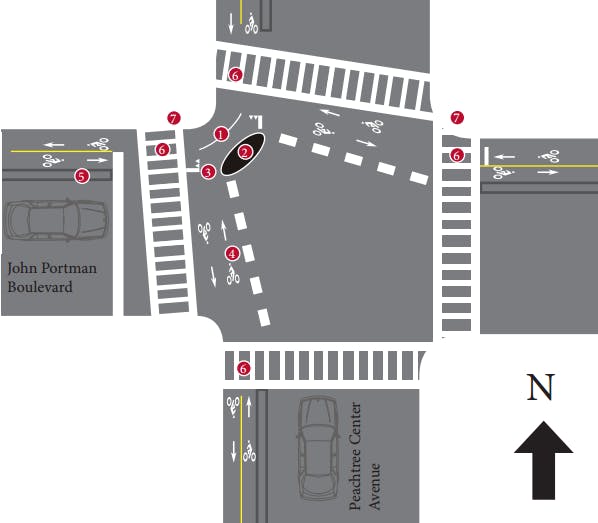Explore Our Network of Sites
Search
By:

Bidirectional protected bike lanes, which put both directions of bike traffic on the same side of a street, may not be ideal. But they can be useful in a pinch. Like all protected bike lanes, well-designed bidirectionals are more comfortable to more riders than having no bike lanes on busy streets. This month in downtown Atlanta, something interesting is happening for the first time in the United States: two bidirectional protected bike lanes are crossing each other at a four-way intersection. Fortunately, both of them are on the “left” side of signalized one-way streets. This is generally the best way to use a bidirectional protected bike lane, in part because it prevents total chaos in situations like this one.
Approaching John Portman Boulevard from the south on Peachtree Center Avenue. Image: Google Street View.
In a two-page memo this week, Atlanta Chief Bicycle Officer Becky Katz explained the five challenges before the city:
There's no question it's a challenging situation. With advice from bikeway specialists at Toole Design Group, Katz's team settled on the modified protected intersection illustrated above. One defining factor of a protected intersection is a bean-shaped corner safety island, which prompts people in cars to turn the corner at an angle that makes it easy to see people approaching on bikes. When it went in, some early chalking suggested that it'd interfere directly with the bikeway; Katz said online that it wasn't the final striping. Instead, once the striping is finished, people of every mode will be prompted to move a little bit out of direction in an effort to help everyone see each other. Advances in bike lane design are leading to rapid changes in intersection design. No wonder the next AASHTO bike guide, which is currently being written by Toole, is expected to devote a whole chapter to it.